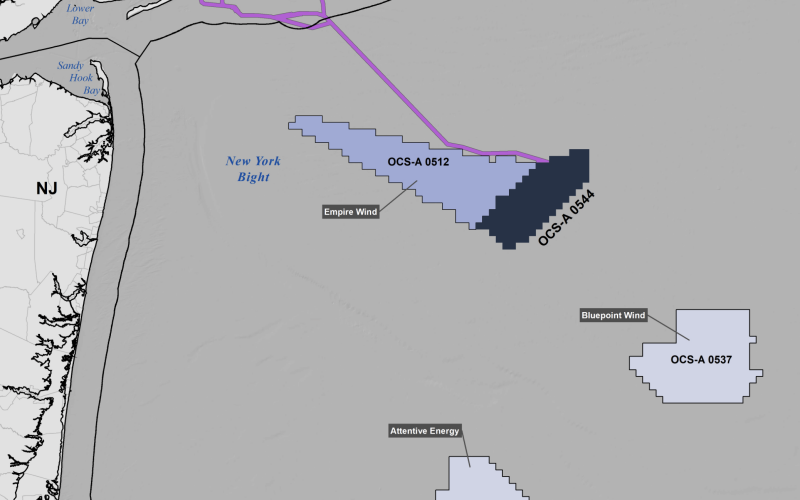An environmental review has started for the proposed Vineyard Mid-Atlantic wind turbine array off New York, the Bureau of Ocean Energy Management announced Tuesday.
The proposed array of 117 turbines generating 2,000 megawatts would be on a 43,056-acre lease held by Vineyard Offshore LLC, organized in 2022 by developers of the Vineyard Wind project off southern New England. The group develops projects with investment from Copenhagen Infrastructure Partners, a Danish fund management company focused on energy.
The lease is one of six in the New York Bight lease area that BOEM awarded Feb. 23, 2022, in a record-setting lease sale that fetched about $4.37 billion. Seen then as an eye-popping harbinger of a growing U.S. wind industry, the sale was a high-water mark for the Biden administration’s renewable energy ambitions.
The Vineyard Mid-Atlantic tract borders the Equinor’s 80,000-acre Empire Wind lease, acquired in 2017 and one of the earliest ventures in northeast U.S. waters. Vineyard’s lease is about 20 miles south of New York’s Long Island and 36 miles east of New Jersey, near the apex of the New York Bight.
The proposal includes two potential export cable corridors that could have New York landfalls at Rockaway Beach, Atlantic Beach, or Jones Beach.
Coming one week before president-elect Donald Trump’s inauguration Jan. 20, the plan could be for naught if Trump carries through on his promises to stop all work on offshore wind development in the U.S.
At the moment, BOEM will publish a Jan. 15 notice of intent to prepare an environmental impact statement for the Construction and Operations Plan (COP) submitted by Vineyard Mid-Atlantic, LLC. It’s the 14th COP review initiated under the Biden administration, which has pushed on offshore wind planning in its waning months.
"Our environmental reviews are essential for helping us identify, evaluate, and address the possible impacts of our renewable energy efforts on other uses of the offshore environment and marine ecosystems,” BOEM Director Elizabeth Klein said in announcing the notice. "Continued engagement with Tribes, local communities, ocean users, and others is critical for ensuring future decisions are well-informed."
The publication opens a 45-day public comment period, ending March 1.





